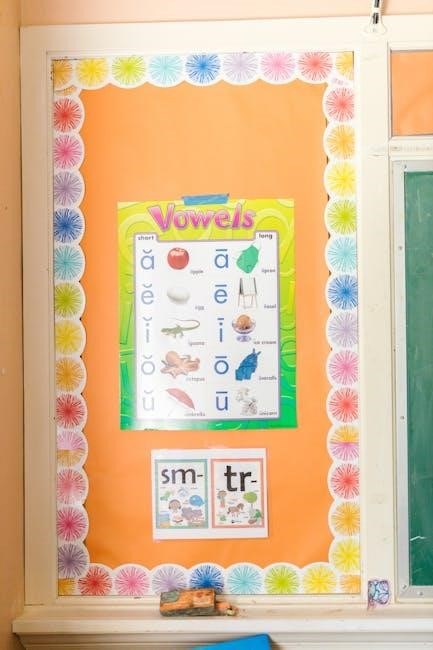
electricity study guide
The Electricity Study Guide resource includes three versions for student review and completion with review worksheets and digital study guide options available online today always.
Overview of the Study Guide
The Electricity Study Guide is a comprehensive resource designed to help students review key science concepts‚ including conductors and insulators‚ simple circuits‚ and electrical energy transformations. This study guide is available in three versions‚ catering to different learning needs and preferences. The guide is intended to be used alongside other educational resources‚ such as the Electricity and Circuits Slide Deck‚ to provide a thorough understanding of electricity and its applications. The study guide includes review worksheets‚ allowing students to assess their knowledge and identify areas for further study. With its flexible design‚ the guide can be used in various educational settings‚ supporting students in their learning journey; The resource is also available in digital format‚ making it easily accessible and convenient to use. Overall‚ the Electricity Study Guide is a valuable tool for students seeking to deepen their understanding of electricity and its principles.
Alignment with Other Educational Resources
The Electricity Study Guide is designed to align with other educational resources‚ such as the Electricity and Circuits Slide Deck‚ to provide a comprehensive learning experience. This alignment ensures that students receive a consistent and cohesive education‚ with the study guide reinforcing key concepts and principles presented in the slide deck. The guide is also intended to complement other teaching materials‚ such as textbooks and online resources‚ to create a well-rounded and engaging learning environment. By aligning with other educational resources‚ the Electricity Study Guide helps to create a seamless and supportive learning experience‚ allowing students to navigate complex concepts with confidence. The guide’s alignment with other resources also enables teachers to easily integrate it into their existing curriculum‚ making it a valuable tool for educators. This alignment is a key feature of the study guide‚ supporting effective and efficient learning.

Technical Learning College Courses
Technical Learning College offers flexible distance-based learning options always available online.
Distance-Based Learning Options
Technical Learning College offers distance-based learning options that are flexible and available 24 hours a day‚ allowing students to learn at their own pace. The college provides course materials and resources that can be accessed online‚ making it convenient for students to study from anywhere. Students can also request printed copies of the training material if needed. The distance-based learning options are designed to be independent‚ allowing students to work on their own without the need for traditional classroom instruction. This approach is ideal for students who have busy schedules or prefer to learn independently. The college’s distance-based learning options are available for various courses‚ including those related to electricity and circuits. By offering flexible learning options‚ the college aims to make education more accessible and convenient for students. The college’s approach to distance-based learning is student-centered and focused on providing high-quality education.
Course Materials and Resources
The college provides a range of course materials and resources to support student learning‚ including study guides‚ review worksheets‚ and digital resources. These materials are designed to be comprehensive and cover key concepts and topics related to electricity and circuits. The college also offers guided notes that are teacher-prepared handouts with blank spaces for students to fill in key facts and concepts. Additionally‚ the college provides access to online resources‚ such as slides and presentations‚ to supplement student learning. The course materials and resources are available in various formats‚ including printed and digital copies‚ to cater to different student preferences. The college’s aim is to provide students with a comprehensive set of materials and resources to support their learning and understanding of electricity and circuits. By providing high-quality course materials and resources‚ the college aims to enhance student engagement and achievement.

Circuit Analysis
Circuit analysis involves studying the behavior of electric currents and voltages in circuits using laws and theorems to understand circuit behavior and properties always online.
Calculating Resistance
Calculating resistance is a crucial aspect of circuit analysis‚ involving the determination of the total resistance of a circuit. This can be achieved by considering the arrangement of resistors‚ whether in series or parallel. In series‚ the total resistance is the sum of individual resistances‚ while in parallel‚ the reciprocal of the total resistance is the sum of the reciprocals of individual resistances. The calculation of resistance is essential to understanding the behavior of electric currents and voltages in circuits. By applying the laws of circuit analysis‚ such as Ohm’s law and Kirchhoff’s laws‚ the resistance of a circuit can be accurately determined. This knowledge is vital in the design and analysis of electrical systems‚ allowing engineers to optimize circuit performance and ensure efficient energy transfer. The calculation of resistance is a fundamental concept in the study of electricity and electronics.
Conservation of Voltage and Electric Current
The conservation of voltage and electric current is a fundamental principle in the study of electricity‚ stating that the total voltage and current remain constant in a closed circuit. This principle is based on the laws of energy and charge conservation‚ which dictate that energy and charge cannot be created or destroyed‚ only transformed. In a circuit‚ the voltage and current are conserved‚ meaning that the sum of voltage changes around a loop is zero‚ and the sum of currents entering a node is equal to the sum of currents leaving the node. This principle is essential in understanding the behavior of electric circuits and is used to analyze and design electrical systems. The conservation of voltage and electric current is a critical concept in the study of electricity and electronics‚ and is used to solve problems and design circuits. This principle is widely applied in various fields of electrical engineering.

Electric Current and Potential Difference
Electric current flows due to potential difference between two points always generating electricity study guide resources online now available for students everywhere instantly.
Flow of Charges
The flow of charges is a fundamental concept in the study of electricity‚ and it is essential to understand how charges move through a conductor. In a conductor‚ the flow of charges is due to the movement of electrons‚ which are negatively charged particles. When a potential difference is applied across a conductor‚ the electrons flow from the negative terminal to the positive terminal‚ resulting in an electric current. The flow of charges can be affected by various factors‚ such as the resistance of the conductor‚ the voltage applied‚ and the temperature of the conductor. Understanding the flow of charges is crucial in designing and analyzing electrical circuits‚ and it is a key concept in the electricity study guide. The flow of charges is also related to the concept of electric current‚ which is the rate of flow of charges through a conductor.
Opposition of the Medium
The opposition of the medium is a crucial concept in the study of electricity‚ referring to the resistance that a conductor offers to the flow of electric current. This opposition is due to the interactions between the electrons and the atoms of the conductor‚ which slow down the flow of electrons. The opposition of the medium is measured in terms of resistance‚ which is quantified by Ohm’s law. The resistance of a conductor depends on its material‚ length‚ and cross-sectional area. Understanding the opposition of the medium is essential in designing and analyzing electrical circuits‚ as it affects the voltage‚ current‚ and power dissipated in the circuit. The electricity study guide provides a comprehensive overview of the opposition of the medium‚ including its causes‚ effects‚ and applications in various electrical systems. This knowledge is vital for students to understand the behavior of electric currents in different conductors and mediums.

Real-World Applications
Electricity study guide applies to various fields including welding technology and industrial processes every day always.
Welding Technology
Welding technology is a significant application of electricity‚ where electrical energy is used to melt and join metals. This process involves the use of electrical arcs or sparks to generate heat‚ which is then used to fuse the metal pieces together. The introduction of advanced welding systems‚ such as the Deltaweld system with Intellx Elite‚ has brought significant advantages to the welding industry. These systems provide improved precision‚ efficiency‚ and quality‚ making them essential for various industrial applications. The use of electricity in welding technology has revolutionized the manufacturing process‚ enabling the creation of complex structures and products. With the increasing demand for high-quality welds‚ the application of electricity in welding technology continues to play a vital role in shaping the industry. Overall‚ the integration of electricity in welding technology has transformed the way metals are joined‚ making it an essential component of modern manufacturing.